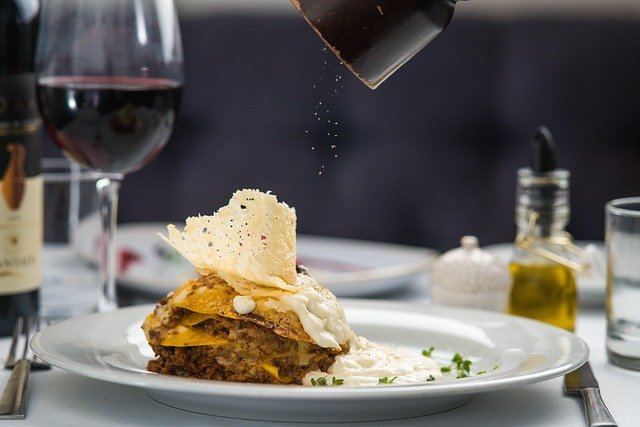Culinary Alchemy: Transforming Everyday Ingredients
Discover the art of culinary transformation as we explore innovative techniques to elevate humble ingredients into gourmet delights. From unexpected flavor pairings to creative cooking methods, this journey will inspire you to reimagine your pantry staples and create extraordinary dishes that will surprise and delight your taste buds.

Unexpected Flavor Pairings
One of the most exciting aspects of culinary alchemy is the exploration of unexpected flavor combinations. While traditional pairings have their place, pushing the boundaries can lead to delightful discoveries. Consider the interplay of sweet and savory, such as pairing watermelon with feta cheese or strawberries with balsamic vinegar. These combinations create a harmonious balance that tantalizes the palate. Another approach is to combine contrasting textures, like crispy fried shallots atop creamy soup or crunchy nuts in a smooth custard. The key is to think beyond conventional wisdom and trust your instincts. Experiment with ingredients from different cuisines, like adding miso to caramel sauce or incorporating lavender into savory dishes. These unexpected pairings can elevate a simple dish to a memorable gastronomic experience, challenging and delighting diners with each bite.
Transformative Cooking Techniques
Innovative cooking techniques play a crucial role in culinary alchemy, offering new ways to manipulate ingredients and create unique textures and flavors. Sous vide cooking, for example, allows for precise temperature control, resulting in perfectly cooked meats and vegetables with intensified flavors. Molecular gastronomy techniques like foams and gels can add whimsy and intrigue to a plate. Smoking isn’t just for meats anymore; try cold-smoking butter or cheese for a subtle, smoky flavor that can elevate a simple dish. Fermentation is another powerful tool, transforming ordinary vegetables into complex, tangy delights. Even basic techniques can be reimagined: try cooking pasta in flavored liquids instead of plain water, or use a blowtorch for spot caramelization. These methods not only change the texture and flavor of ingredients but also open up new possibilities for presentation and creativity in the kitchen.
Reimagining Pantry Staples
The true test of culinary alchemy lies in the ability to transform everyday pantry staples into extraordinary dishes. Take the humble can of chickpeas, for instance. Beyond hummus, these legumes can be roasted until crispy for a healthy snack, blended into a vegan meringue called aquafaba, or even incorporated into desserts like chocolate chip cookies. Rice, a staple in many cuisines, can be transformed into crispy rice cakes, fermented into a probiotic drink, or puffed for a crunchy garnish. Even condiments can be reinvented: mix mayonnaise with different spices or herbs to create unique sandwich spreads, or blend it into cake batter for extra moisture. The key is to look at these familiar ingredients with fresh eyes and an open mind, considering their potential beyond their traditional uses.
Plating and Presentation Alchemy
The final step in culinary alchemy is the art of plating and presentation. This is where the transformation of ingredients becomes a visual spectacle. Techniques like deconstruction can take a familiar dish and present its components in a new, artistic way. For example, a deconstructed cheesecake might feature crumbled graham crackers, dollops of cream cheese filling, and fresh berries artfully arranged on the plate. Color theory plays a crucial role in creating visually appealing dishes; consider using naturally vibrant ingredients like beets or turmeric to add pops of color. Edible flowers and microgreens not only add visual interest but also introduce subtle flavors and textures. Even the choice of serving vessel can transform a dish – try serving soup in a hollowed-out vegetable or dessert in an edible chocolate cup. Remember, we eat with our eyes first, so the visual transformation of ingredients is just as important as their culinary metamorphosis.
Culinary Alchemy Tips & Facts
• Experiment with contrasting temperatures in a single dish for a sensory surprise
• Use a smoking gun to add a quick smoky flavor to foods like cocktails or butter
• Try cooking fruits to bring out their savory qualities in main dishes
• Incorporate edible flowers not just for garnish, but for their unique flavors
• Explore umami-rich ingredients like nutritional yeast to add depth to vegetarian dishes
• Use molecular gastronomy techniques like spherification to create burst-in-your-mouth flavor bombs
• Experiment with different types of salts to add complexity to your dishes
• Try fermenting vegetables at home for probiotic-rich, flavorful additions to meals
In conclusion, culinary alchemy is about more than just cooking; it’s a mindset that encourages creativity, experimentation, and a fresh perspective on ingredients. By embracing these principles, anyone can transform their kitchen into a laboratory of flavors, textures, and visual delights. The next time you open your pantry or refrigerator, challenge yourself to see beyond the obvious and embark on your own alchemical culinary adventure. Who knows what delicious discoveries await?





